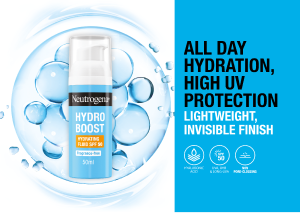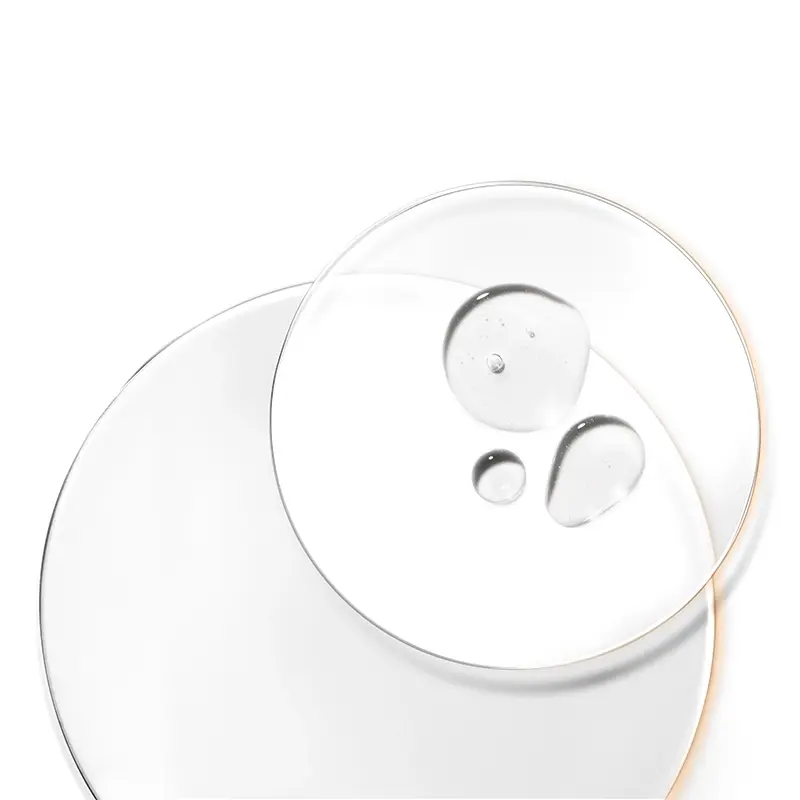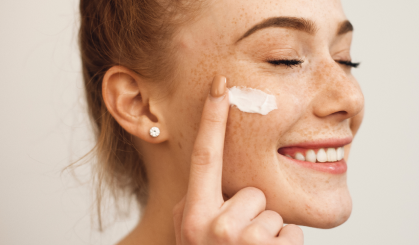Throughout its 4,000-year history in holistic healing, turmeric has not only been praised for its health properties but recognised for its skincare benefits too. In fact, Ayurveda – a traditional Indian school of healing – has taken advantage of its benefits for the skin for centuries.
But what is turmeric? And why is it good for the skin? Read on to discover everything you need to know about turmeric and the benefits of adding it to your daily skincare routine.
In this guide:
What is turmeric and why is it good for the skin?
Turmeric is a spice that derives from the root of Curcuma longa. It belongs to the same family as ginger, and shares many of the same qualities, including its antioxidant, antibacterial and anti-inflammatory properties. Turmeric is also believed to be a natural painkiller, as well as a plant that can support digestion when included in your diet.
Applied topically, turmeric can help with a number of skin problems, such as blemishes, dark circles and dull skin. It can also be used to achieve a radiant complexion and help combat signs of ageing when added to your skincare routine.
Turmeric benefits for skin
Here are six benefits you can enjoy by adding turmeric to your skincare regime:
1) Helps spot-prone skin
Turmeric can help fight spot-prone skin, as it prevents your skin cells from clustering together and clogging your pores. As it has purifying and antibacterial properties, it may also help to prevent the growth of bacteria associated with spots. Additionally, its soothing properties can help to reduce any swelling and redness.
2) Helps brighten complexion
In parts of India, Bangladesh and Pakistan, turmeric paste is applied to the bride’s and groom’s skin before they get married, as it’s believed to make the skin glow. Turmeric also helps to boost microcirculation, for a more supple and radiant complexion.
3) Aids in lightenening hyperpigmentation
Turmeric inhibits the production of melanin (a substance responsible for dark spots and hyperpigmentation). Incorporating turmeric into your skincare regime may help reduce the appereance of dark spots and hyperpigmentation for a smoother, clearer complexion.
4) Helps reduce dark circles
No matter how many hours sleep you get, dark circles can leave you looking fatigued. Thanks to its skin brigtening and soothing properties, turmeric can help to reduce the apperance of dark circles under your eyes to keep you looking your best.
5) Aids in reducing the appearance of visible signs of premature ageing
Collagen is a protein responsibile for skin elasticity. As we age, our bodies produce less collagen, which can result in the appearance of fine lines and wrinkles. Turmeric can help support collagen production to help prevent visible signs of premature ageing.
6) Protects against environmental damage
Turmeric is also known for its antioxidant properties. Antioxidants can help counteract free radicials that come into contact with your skin from external factors, such as sun exposure and pollution.
How to incorporate turmeric into your diet
Curry is the obvious choice when it comes to incorporating turmeric into your diet, but there are so many other ways to make use of this splendid spice. These include:
Roasted vegetables
Soups
Dips and spreads
Smoothies
Turmeric tea and lattes.
You could sprinkle a little of the spice onto roasted veg, for example, or add a pinch to your morning smoothie. Turmeric lattes are a popular option, too – as is golden milk, which is a warming, comforting drink of heated up milk and turmeric. In India, people have been drinking turmeric and milk as an Ayurvedic remedy for hundreds of years.
Many people use turmeric on a daily basis and the spice is widely available at most supermarkets. But if you’re not a fan of turmeric’s distinctive taste, supplements are a popular alternative, allowing you to still experience its benefits. Just make sure you talk to your doctor before adding supplements to your diet, as turmeric supplements may not be suitable if you’re pregnant, have gastrointestinal issues, or are on certain medications.
How to incorporate turmeric into your skin care regime
Using skincare products containing extracts of turmeric will avoid any skin staining. Turmeric is especially beneficial for blemish-prone skin, thanks to its natural antibacterial and soothing qualities. Applying it topically to the skin could help to reduce redness for a more even complexion and clearer-looking skin.
Turmeric also has cleansing properties, so cleansers, make-up removers, and toners containing turmeric can all be great products to use in your skincare regime.
Cleansers
Turmeric cleansers can be a good option for spot-prone skin since they can calm and soothe the skin. NEUTROGENA ® Clear & Soothe Mousse Cleanser contains skin-friendly turmeric and gently removes dirt, oil, and make-up.
Make-up removers
Make-up removing products that are formulated with turmeric – like the NEUTROGENA® Clear & Soothe Micellar Jelly Make-up Remover – can help to remove make-up while also soothing spot-prone and dehydrated skin. This product melts into the skin to remove traces of make-up and is non-staining, so it won’t leave any residue behind.
Toners
The calming and anti-oxidant properties of turmeric makes it an ideal ingredient for toners, which aim to provide your skin with a quick pick-me-up throughout the day. NEUTROGENA® Clear & Soothe Toning Mist is an ultra-fine toning mist designed to refresh stressed skin. It’s perfect for the morning but can be applied whenever you need it.
Turmeric skin care FAQs
Is turmeric good for skin?
Yes, turmeric is good for the skin and has been used for thousands of years, thanks to its many skincare benefits. Its soothing and antioxidant properties can help comfort and ease a wide range of skin problems, such as blemishes, dull skin and dark spots. It can also help to reduce the appearance of visible signs of premature ageing by supporting collagen production.
What can turmeric do for skin?
Turmeric can help with a range of skin concerns, but it’s mostly recognised for its antioxidant, antibacterial, and soothing properties.
Is it okay to put turmeric products on your face every day?
Specially formulated skincare products containing turmeric can be used daily to cleanse and moisturise skin. However, always follow the instructions for use on the pack.
Will turmeric stain my skin yellow?
Curcumin is the active ingredient in turmeric, which gives it its antioxidant and soothing benefits – however, it’s also what gives turmeric its distinctive yellow colour. NEUTROGENA® uses a turmeric extract in its skincare products, rather than actual turmeric, which is why it won’t stain the skin.







